
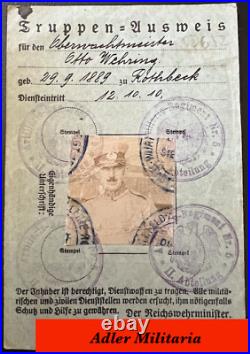
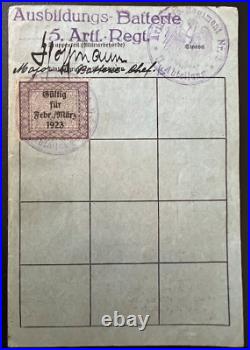

Original Pre-WWII German Army Weimar Reichswehr Soldier ID Truppen Ausweis RARE. A very rare photo identity paper known as the Troop Identity. Issued to Oberwachtmeister Otto Wehring in the Reichswehr in 1923 with Artillerie Regiment Nr 5. He was one of the 100,000 standing army. Interestingly the II Batt, that Wehring was in was in Bayern, and the Reichswehr took part in the downing of H Putsch in 9 November 1923. If Wehring was present, we will not know, but he certainly was in active service at the time in a very small army.’Reich Defense’ was the official name of the German armed forces during the Weimar Republic and the first years of the Third Reich. After Germany was defeated in World War I, the Imperial German Army (Deutsches Heer) was dissolved in order to be reshaped into a peacetime army. From it a provisional Reichswehr was formed in March 1919. Under the terms of the Treaty of Versailles, the rebuilt German army was subject to severe limitations in size, structure and armament. The official formation of the Reichswehr took place on 1 January 1921 after the limitations had been met. The German armed forces kept the name’Reichswehr’ until Adolf Hitler’s 1935 proclamation of the “restoration of military sovereignty”, at which point it became part of the new Wehrmacht. Although ostensibly apolitical, the Reichswehr acted as a state within a state, and its leadership was an important political power factor in the Weimar Republic. The Reichswehr sometimes supported the democratic government, as it did in the Ebert-Groener Pact when it pledged its loyalty to the Republic, and sometimes backed anti-democratic forces through such means as the Black Reichswehr, the illegal paramilitary groups it sponsored in contravention of the Versailles Treaty. The Reichswehr saw itself as a cadre army that would preserve the expertise of the old imperial military and form the basis for German rearmament. Structure of the Reichswehr. Arms limitations under the Treaty of Versailles. In Part V of the 1919 Versailles Peace Treaty, Germany had obligated itself to limit the size and armaments of its military forces so that they could be used only as border protection and for the maintenance of order within Germany. In accordance with the treaty’s provisions, personnel strength was limited to a professional army of 100,000 men plus a 15,000-man navy. The establishment of a general staff was prohibited. Heavy weapons above defined calibers, armored vehicles, submarines and large warships were prohibited, as was any type of air force. The regulations were overseen by the Military Inter-Allied Commission of Control until 1927. Conscription into the German army had traditionally been for a period of 1 to 3 years. After they had completed their terms of service, the discharged soldiers created a large pool of trained reserves. The Versailles Treaty fixed the term of service for Reichswehr officers at 25 years and for all others at 12 in order to prevent such a buildup of reservists. Artillerie Regiment Nr 5. The regiment was formed on January 1, 1921 in Ulm from the Reichswehr Artillery Regiments 11, 13 and 14 of the Transitional Army. At the beginning of the 1920s, the departments in Ulm and Fulda exchanged their numbering. In the course of the expansion of the Reichswehr in 1934, the new regiments Artillery Regiment Ulm, Artillery Regiment Fulda and Artillery Regiment Ludwigsburg, each with five departments, were set up from the three departments of the regiment. On October 15, the Artillery Regiment Ulm was renamed Artillery Regiment 5 and placed under the 5th Infantry Division. Check back often – we search estates and sources across the world to bring a fine selection of militaria. Please review all photos for details regarding the condition of the item listed – further condition information will be included in the listing as is relevant, if you need additional photographs or have questions regarding the condition please do not hesitate to ask. I describe all items to the best of my ability – please do not hesitate to ask any and all questions prior to the close of the listing. Mistakes very rarely occur – however if one does please rest assured that it will be corrected. International Buyers are Welcome!


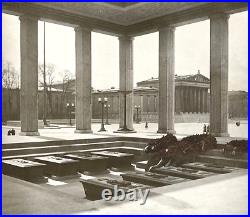
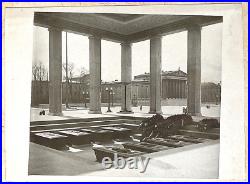
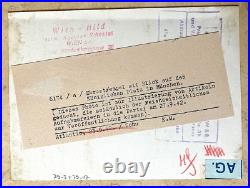
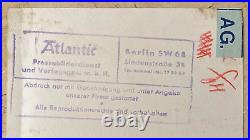
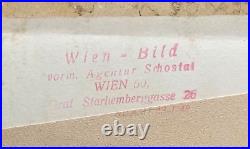

WW2 GERMAN TEMPLE OF HONOR SARCOPHAGI (BEER HALL PUTSCH MARTYRS) PHOTO 1942. WW2 GERMAN TEMPLE OF HONOR SARCOPHAGI OF BEER HALL PUTSCH MARTYRS. NEWS WIRE PHOTO 1942. The Honor Temples were two structures in Munich, erected by the National Socialists in 1935, housing the sarcophagi of the 16 members of the Party who had been killed in the failed Beer Hall Putsch (8 in each of the temples). The Beer Hall Putsch, also known as the Munich Putsch, was a failed coup d’état by the German National Socialist Party leader and Generalquartiermeister Erich Ludendorff and other Kampfbund leaders in Munich, Bavaria, Germany on 8-9 November 1923, during the Weimar Republic. He Putsch did give the National Socialists their first national attention and propaganda victory leading eventually to World War 2. ORIGINAL PHOTOGRAPHER’S STAMP ON THE REVERSE AND ORIGINAL NEWS WIRE SLUG LABEL. 6174 / a / Temple of Honor with a view of the. Royal Square in Munich. This photo is to illustrate articles. Commemorated on the occasion of the Reich’s uniform acceptance. Ceremonies into the party on September 27, 1942. Atlantic, 23-942 / Schu. 6174 / a / Ehrentempel mit Blick auf den. Königlichen Platz in München. Dieses Photo ist zur Illustrierung von Artikeln. Gedacht, die anlasslich der reichseinheitlichen. VERY SHARP FOCUS AND VERY GOOD CONTRAST. THIS IS NOT A REPRODUCTION OR A COPY.


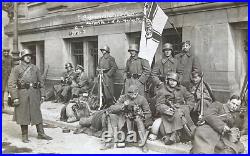
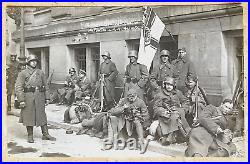

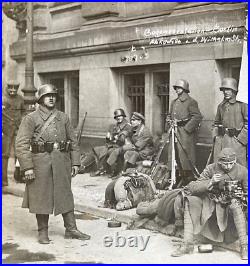
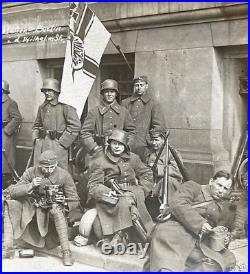
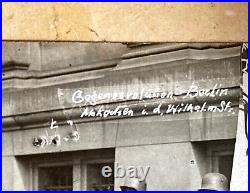
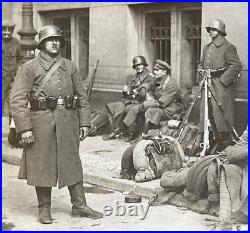
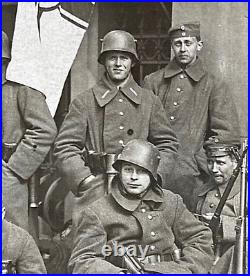

POST-WW1 GERMAN KAPP PUTSCH FREIKORPS in BERLIN 1920 PHOTO POSTCARD RPPC. POST-WW1 GERMAN KAPP PUTSCH FREIKORPS in BERLIN 1920. FULLY ARMED POST-WW1 GERMAN KAPP PUTSCH FREIKORPS MEMBERS OF THE MARINE BRIGADE EHRHARDT ARE SEEN WITH THE IMPERIAL NAVY FLAG ON THE STREETS OF BERLIN DURING THE KAPP-PUTSCH in BERLIN MARCH 1920. Was an attempted coup against the German national government in Berlin on 13 March 1920 that lasted 5 days. Also known as the. Was a Freikorps unit of the early Weimar Republic. It was formed on 17 February 1919 as the Second Marine Brigade from sailors (Matrosen) of the former Imperial German Navy under the leadership of Hermann Ehrhardt. The Brigade was used primarily in the suppression of the Bavarian Soviet Republic and the First Silesian Uprising, both in the first half of 1919. In March 1920, faced with its imminent disbanding by orders of the government in Berlin, the Marine Brigade was one of the main supporters of the Kapp Putsch that tried to overthrow the Weimar Republic. TITLED IN THE LOWER NEGATIVE. VERY SHARP FOCUS WITH VERY GOOD CONTRAST. THIS IS NOT A REPRODUCTION OR A COPY.


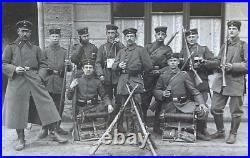
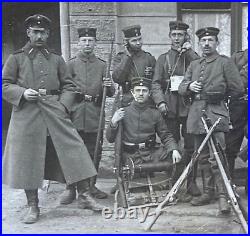
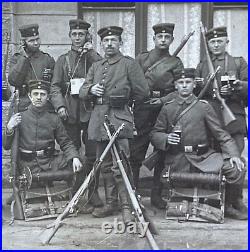
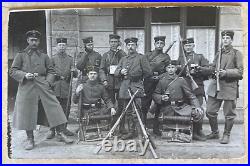

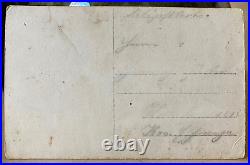

POST-WW1 GERMAN KAPP PUTSCH FREIKORPS TELEPHONES BERLIN 1920 PHOTO POSTCARD RPPC. POST-WW1 GERMAN KAPP PUTSCH FREIKORPS w/ TELEPHONES BERLIN 1920 PHOTO POSTCARD RPPC. ARMED POST-WW1 GERMAN KAPP PUTSCH FREIKORPS MEMBERS OF THE MARINE BRIGADE EHRHARDT ARE SEEN WITH TELEPHONE CABLE LAYER BACKPACKS, TELEPHONE HANDSETS AND A CABLE WIRE POLE HAND TOOL ON THE STREETS OF BERLIN DURING THE KAPP-PUTSCH in BERLIN MARCH 1919. PARTIAL TRANSLATED PERIOD HAND ID’D ON THE REVERSE IN OLD GERMAN SCRIPT. – – isangn. Was an attempted coup against the German national government in Berlin on 13 March 1920 that lasted 5 days. Also known as the. Was a Freikorps unit of the early Weimar Republic. It was formed on 17 February 1919 as the Second Marine Brigade from sailors (Matrosen) of the former Imperial German Navy under the leadership of Hermann Ehrhardt. The Brigade was used primarily in the suppression of the Bavarian Soviet Republic and the First Silesian Uprising, both in the first half of 1919. In March 1920, faced with its imminent disbanding by orders of the government in Berlin, the Marine Brigade was one of the main supporters of the Kapp Putsch that tried to overthrow the Weimar Republic. VERY SHARP FOCUS WITH VERY GOOD CONTRAST. THIS IS NOT A REPRODUCTION OR A COPY.


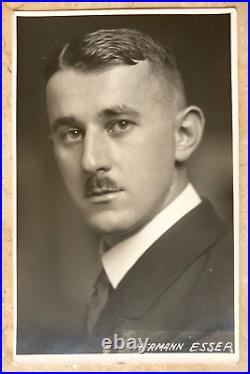
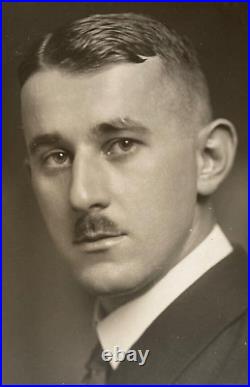
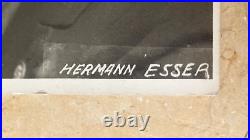
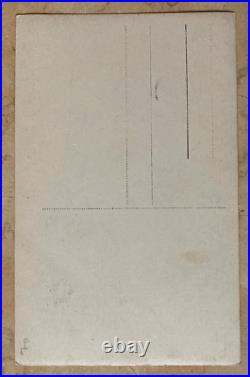

ORIGINAL – PRE-WW2 GERMAN HERMANN ESSER 1928 (JAILED in BEER HALL PUTSCH) POSTCARD RPPC. EARLY PRE-WW2 GERMAN HERMANN ESSER b. 1981 PHOTO POSTCARD RPPC. 19810 was an early member of the National Socialist’s Party in Germany. A journalist, Esser was the editor of the National Socialist newspaper, Völkischer Beobachter, a Propaganda Leader, and a Vice President of the Reichstag. In the early days of the National Socialist’s Party, he was a de facto deputy of Adolf Hitler. At the time of the Beer Hall Putsch on 8-9 November 1923, Esser gave a speech but he told the Leader of the Putsch A. That he was ill and did not actually attend the March. HAND OPAQUED IN THE LOWER RIGHT CORNER OF THE NEGATIVE. CONDITION IS EXTREMELY FINE FOR ITS 95. VERY SHARP FOCUS WITH VERY GOOD CONTRAST. THIS IS NOT A REPRODUCTION OR A COPY.
































